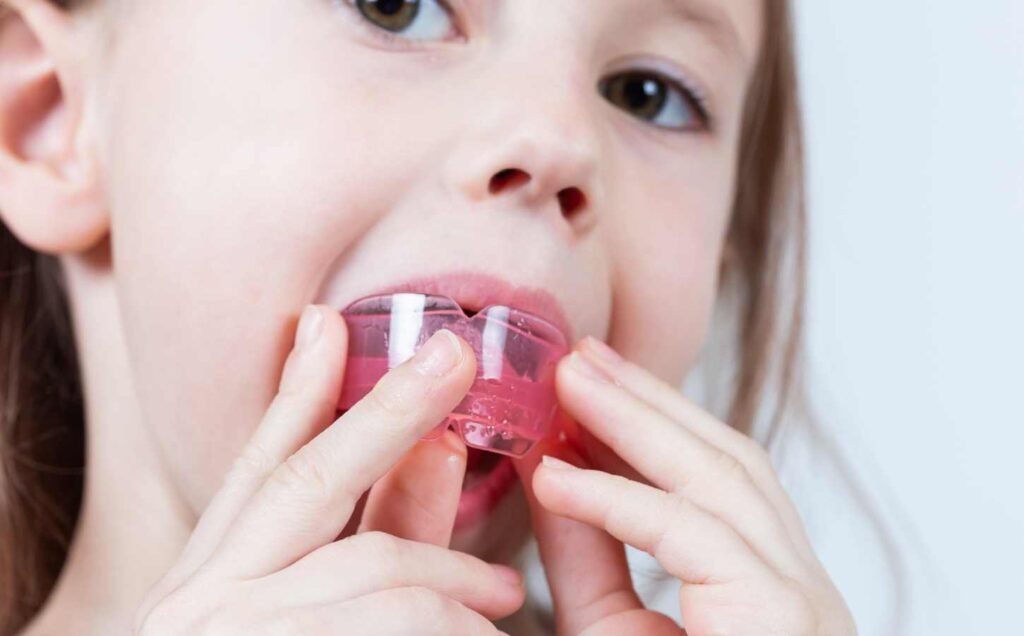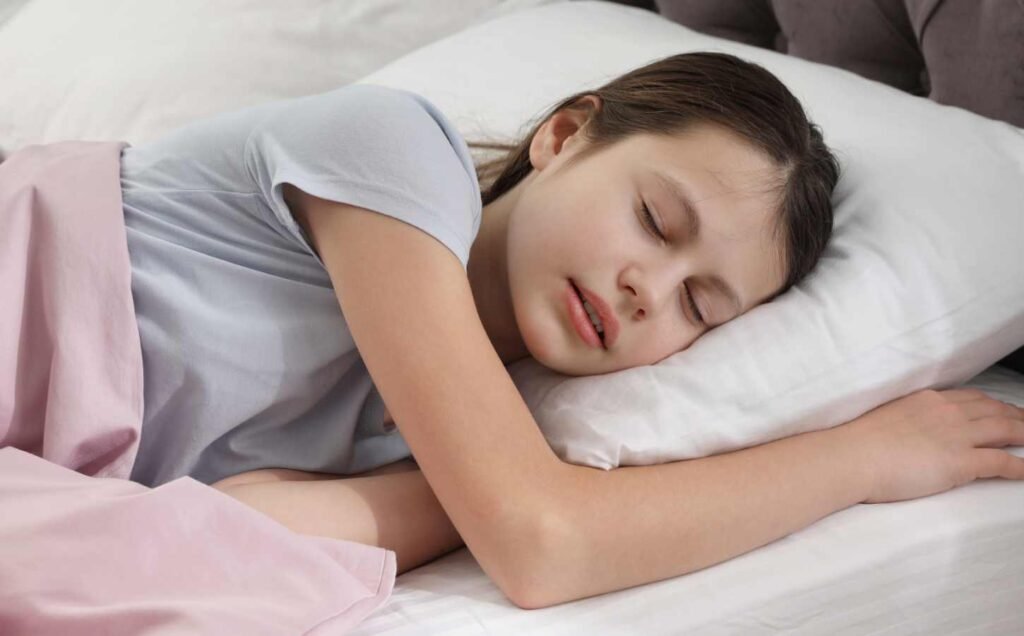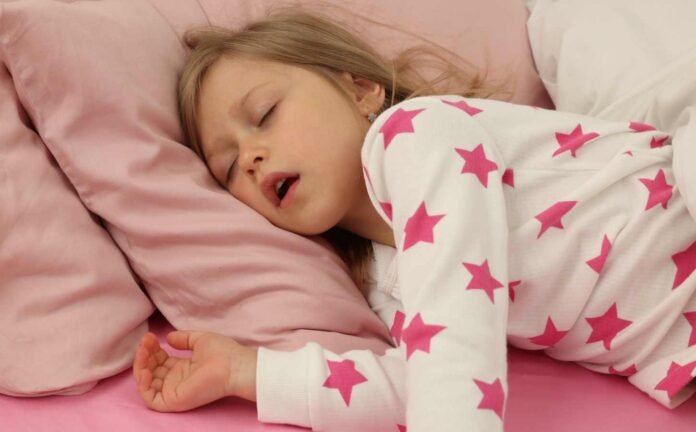Sleep apnea is a common sleep disorder that affects both adults and children.
It is a condition in which breathing repeatedly stops and starts during sleep, leading to poor sleep quality and daytime fatigue. While it is more commonly associated with adults, children can also suffer from sleep apnea. In fact, it is estimated that 1-4% of children suffer from sleep apnea.
Parents may wonder if their child has sleep apnea and may be unsure of how to recognize the symptoms. One way to determine if a child has sleep apnea is by taking a sleep apnea quiz. This quiz can help parents identify some of the common symptoms of sleep apnea in children, such as snoring, gasping or choking during sleep, and daytime sleepiness. By taking this quiz, parents can get a better understanding of their child’s sleep patterns and determine if further testing or treatment is necessary.
Understanding Sleep Apnea in Children
What Is Pediatric Sleep Apnea?
Pediatric sleep apnea is a sleep disorder that affects children and can lead to breathing problems during sleep. It is characterized by repeated pauses in breathing, which can cause a decrease in the amount of oxygen in the blood. This can lead to restless sleep and other symptoms that can affect a child’s overall health.
There are two main types of pediatric sleep apnea: obstructive sleep apnea and central sleep apnea. Obstructive sleep apnea occurs when the airway is blocked, while central sleep apnea occurs when the brain fails to signal the muscles to breathe.
Types of Sleep Apnea
Obstructive sleep apnea is the most common type of sleep apnea in children. It is often caused by enlarged tonsils or adenoids, which can block the airway during sleep. Other causes may include obesity, allergies, or craniofacial abnormalities.
Central sleep apnea is less common in children and is often associated with underlying medical conditions such as heart failure or neurological disorders.
Common Symptoms of Sleep Apnea in Children
Some of the most common symptoms of sleep apnea in children include loud snoring, pauses in breathing during sleep, restless sleep, and excessive daytime sleepiness. Children with sleep apnea may also experience behavioral problems, irritability, and difficulty concentrating.
If your child is experiencing any of these symptoms, it is important to speak with a healthcare provider. A diagnosis of sleep apnea may require a sleep study, which can help determine the severity of the condition and guide treatment options.
Overall, pediatric sleep apnea is a serious condition that can affect a child’s health and well-being. However, with proper diagnosis and treatment, children with sleep apnea can experience improved sleep quality and overall health.
Identifying Risk Factors and Causes
Anatomy and Developmental Factors
Sleep apnea in children can be caused by a variety of factors, including anatomical and developmental issues. Enlarged tonsils and adenoids are the most common cause of sleep apnea in children. When these tissues are enlarged, they can obstruct the airway and cause breathing difficulties during sleep. Other anatomical factors that can contribute to sleep apnea in children include obesity, which can cause excess fat to accumulate in the airway, and abnormalities in the airway or muscles.
Genetic and Lifestyle Considerations
In addition to anatomical and developmental factors, genetic and lifestyle considerations can also contribute to sleep apnea in children. Children with a family history of sleep apnea are more likely to develop the condition themselves. Certain medical conditions, such as Down syndrome, cerebral palsy, neuromuscular disorders, and sickle cell disease, can also increase the risk of sleep apnea in children.
Lifestyle factors, such as obesity and low birth weight, can also contribute to sleep apnea in children. Children who are overweight or obese are more likely to have excess fat in the airway, which can obstruct breathing during sleep. Low birth weight, which is often associated with premature birth, can also increase the risk of sleep apnea in children.
By understanding the various risk factors and causes of sleep apnea in children, parents and healthcare providers can work together to identify and manage the condition. Treatment options may include lifestyle changes, such as weight loss or changes in sleeping position, or medical interventions, such as the removal of enlarged tonsils or the use of a continuous positive airway pressure (CPAP) machine.
Recognizing Daytime and Nighttime Signs
Behavioral Indicators
Children with sleep apnea may exhibit a variety of behavioral indicators during the day, including daytime sleepiness, irritability, difficulty concentrating, and poor performance in school. They may also experience hyperactivity, behavioral problems, and attention deficit hyperactivity disorder (ADHD). Bedwetting and night terrors may also be present in some children with sleep apnea.
Physical Signs During Sleep
During sleep, children with sleep apnea may exhibit physical signs such as snoring, gasping, choking, and sleep terrors. They may also experience headaches upon waking up and exhibit behavioral issues such as irritability and difficulty concentrating during the day.
It is important for parents to recognize these signs and seek medical attention if they suspect their child may have sleep apnea. A proper diagnosis and treatment can improve the child’s quality of life and prevent potential complications.
Diagnosis and When to See a Specialist
Approaching a Pediatrician
If you suspect your child has sleep apnea, the first step is to schedule an appointment with their pediatrician. A pediatrician will ask questions about your child’s sleep habits and medical history, and may perform a physical examination to check for signs of enlarged tonsils or adenoids.
If the pediatrician suspects sleep apnea, they may refer your child to a sleep specialist for further evaluation. It’s important to note that not all pediatricians are trained to diagnose sleep apnea, so it’s crucial to seek out a specialist if necessary.
Comprehensive Sleep Evaluation
A comprehensive sleep evaluation is necessary to diagnose sleep apnea in children. This evaluation typically involves an overnight sleep study, also known as a polysomnography. During this study, your child will be hooked up to monitors that measure their brain waves, breathing, heart rate, and other vital signs while they sleep.
In some cases, a home sleep test may be used instead of a polysomnography. This test involves wearing a small device that measures breathing patterns and oxygen levels while your child sleeps in their own bed.
Once the sleep study is complete, a sleep specialist will review the results and make a diagnosis. If sleep apnea is diagnosed, the specialist will work with you and your child’s pediatrician to develop a treatment plan.
It’s important to seek out a qualified provider for your child’s sleep evaluation and diagnosis. A sleep specialist with experience in pediatric sleep disorders can provide the most accurate diagnosis and effective treatment plan for your child’s specific needs.
Related article: Free At-Home Sleep Apnea Test: How to Get It and What to Expect
Exploring Treatment Options
If your child has been diagnosed with sleep apnea, there are several treatment options available. The right treatment plan will depend on the severity of the condition, the underlying cause, and your child’s overall health. In this section, we will explore the most common treatment options for sleep apnea.
Medical Interventions
Medical interventions are typically the first line of treatment for sleep apnea. These interventions may include the use of a continuous positive airway pressure (CPAP) machine, oral appliances, or myofunctional therapy.
A CPAP machine delivers air pressure through a mask that fits over your child’s nose or mouth while they sleep. This air pressure helps keep the airway open, preventing breathing pauses and snoring. Oral appliances are custom-made devices that fit in your child’s mouth and help keep their airway open. Myofunctional therapy involves exercises that help strengthen the muscles in the mouth and throat, reducing the severity of sleep apnea.

Surgical Procedures
If medical interventions are not effective, your child’s doctor may recommend surgery. The most common surgical procedure for sleep apnea is an adenotonsillectomy, which involves removing the tonsils and adenoids. Other surgical options include nasal surgery to correct structural abnormalities in the nose or upper airway, or jaw surgery to reposition the jaw and tongue.
Lifestyle and Home Remedies
In addition to medical and surgical interventions, lifestyle changes can also help reduce the severity of sleep apnea. These changes may include weight loss, avoiding alcohol and sedatives, and sleeping on your side. Elevating the head of the bed can also help keep the airway open.
It is important to work with your child’s doctor to develop a treatment plan that is tailored to their specific needs. With the right treatment, most children with sleep apnea can enjoy improved sleep and better overall health.
Understanding Complications and Management
Potential Health Impacts
Sleep apnea in children can lead to several potential health impacts. The disorder can cause a decrease in oxygen levels, which can lead to high blood pressure, heart problems, and even stroke. Children with sleep apnea may also experience growth problems due to a lack of growth hormone produced during sleep. Additionally, sleep apnea can cause complications with the lungs, leading to respiratory issues.
Long-Term Management Strategies
Managing sleep apnea in children typically involves a combination of lifestyle changes, medical treatments, and surgery in severe cases. One of the most effective ways to manage sleep apnea is by encouraging healthy sleep habits, such as maintaining a consistent sleep schedule and avoiding electronic devices before bedtime. Weight loss may also be recommended for overweight children with sleep apnea.
Medical treatments for sleep apnea in children may include the use of a continuous positive airway pressure (CPAP) machine, which helps keep the airway open during sleep. In some cases, surgery may be necessary to remove tonsils or adenoids that are obstructing the airway.
Overall, it is important to seek medical attention if your child is showing signs of sleep apnea. Early detection and treatment can help prevent potential health complications and improve your child’s quality of life.
Support and Resources for Parents
Educational Materials and Support Groups
Parents who suspect their child may have sleep apnea can find a wealth of educational materials and support groups to help them navigate this condition. The American Sleep Apnea Association offers a range of resources, including brochures, videos, and webinars, to help parents understand the signs and symptoms of pediatric sleep apnea. The association also hosts a forum where parents can connect with others who have gone through similar experiences.
Another resource for parents is the Sleep Education website, which provides articles, handouts, and videos on sleep disorders in children. The website also offers a directory of sleep centers and specialists who can diagnose and treat sleep apnea.
Support groups can be particularly helpful for parents who are feeling overwhelmed or isolated. The A.W.A.K.E. Network, which stands for Alert, Well, And Keeping Energetic, is a support group for people with sleep apnea and their families. The network has chapters across the United States and offers educational meetings, guest speakers, and social events.
Working with Schools and Educators
Children with sleep apnea may experience learning problems and behavioral issues that can affect their performance in school. Parents can work with their child’s school and educators to ensure that their child’s needs are being met.
One way to do this is to provide the school with a copy of the child’s sleep study results, which can help educators understand the severity of the child’s condition. Parents can also work with the school to develop an individualized education plan (IEP) that addresses their child’s needs, such as allowing for extra time on tests or providing a quiet space for the child to take a nap during the day.
In addition, parents can educate their child’s teachers and classmates about sleep apnea and its effects. This can help reduce stigma and promote understanding and empathy for the child’s condition.
Overall, parents of children with sleep apnea have a range of resources available to them, from educational materials to support groups to working with schools and educators. By taking advantage of these resources, parents can help their child manage their condition and thrive in all areas of life.
Pediatric Sleep Apnea: Causes, Symptoms, and Treatment Options

Pediatric sleep apnea is a sleep disorder that causes a child to stop breathing repeatedly during sleep. This condition occurs when the muscles in the back of the throat fail to keep the airway open, leading to a blockage in the air passage. The child may snore loudly, gasp, or choke during sleep, and may also experience disrupted sleep, leading to daytime sleepiness and other complications.
Continue reading: Pediatric Sleep Apnea
Primary Snoring in Children: Causes and Treatment Options

Primary snoring is a common condition in which a child snores during sleep without any signs of breathing difficulties or interruptions. It is estimated that about 10% to 12% of children snore regularly, and primary snoring accounts for about 85% of all snoring cases in children.
Continue reading: Primary Snoring in Children



